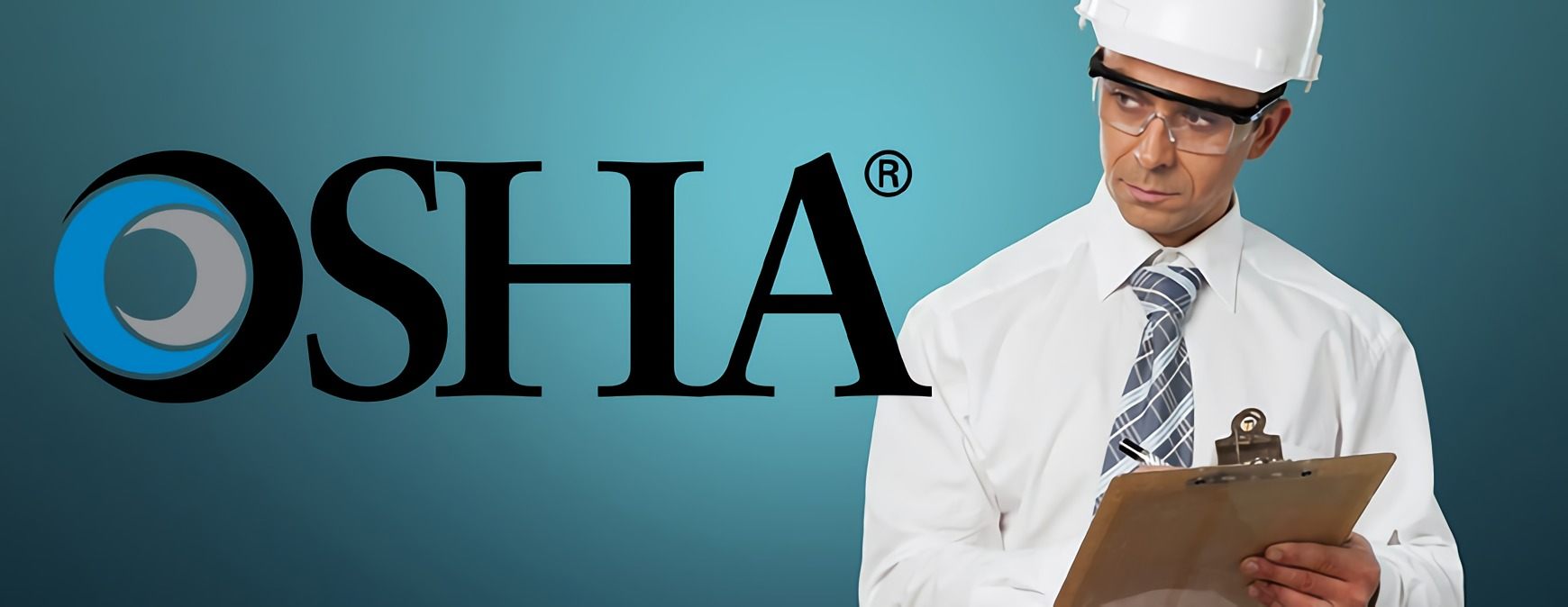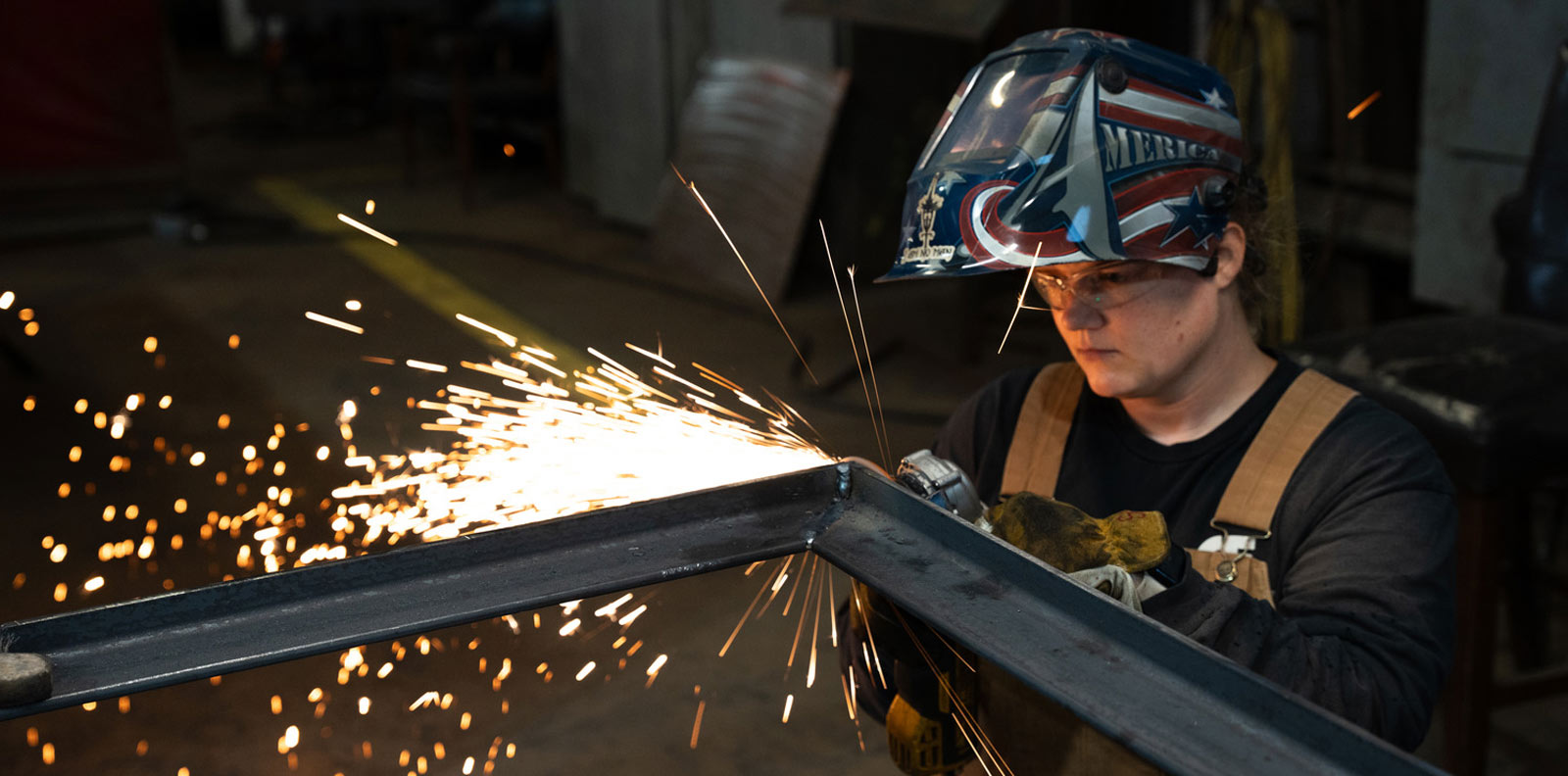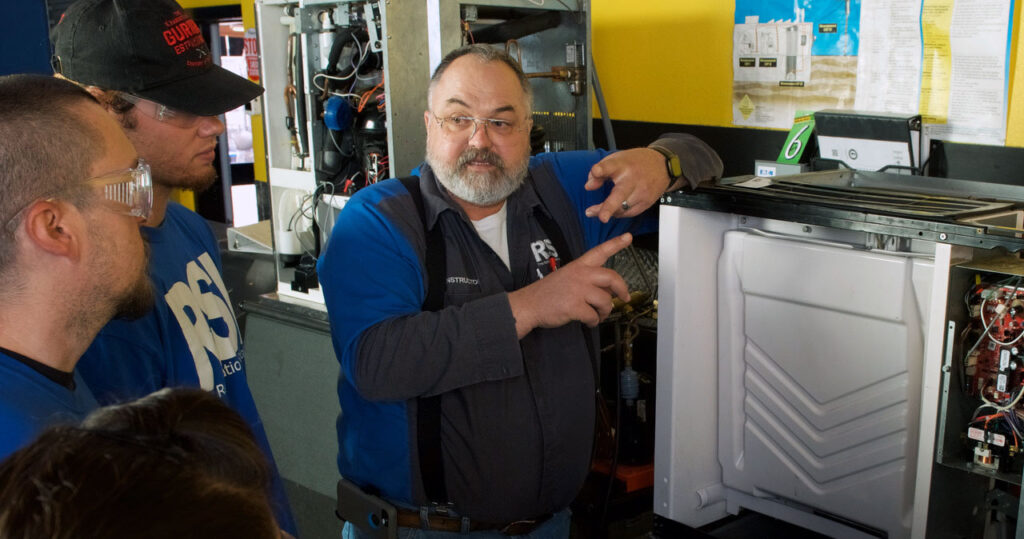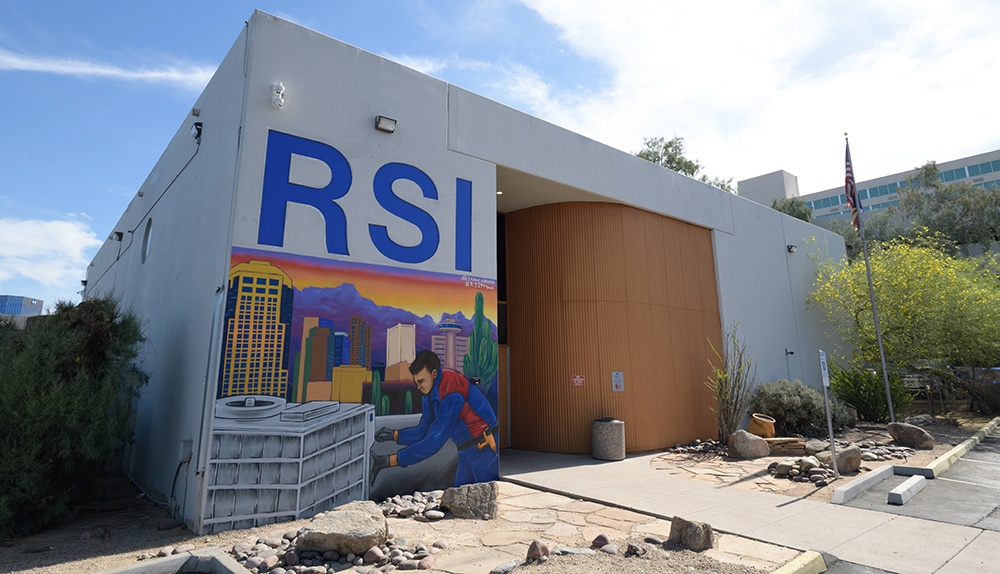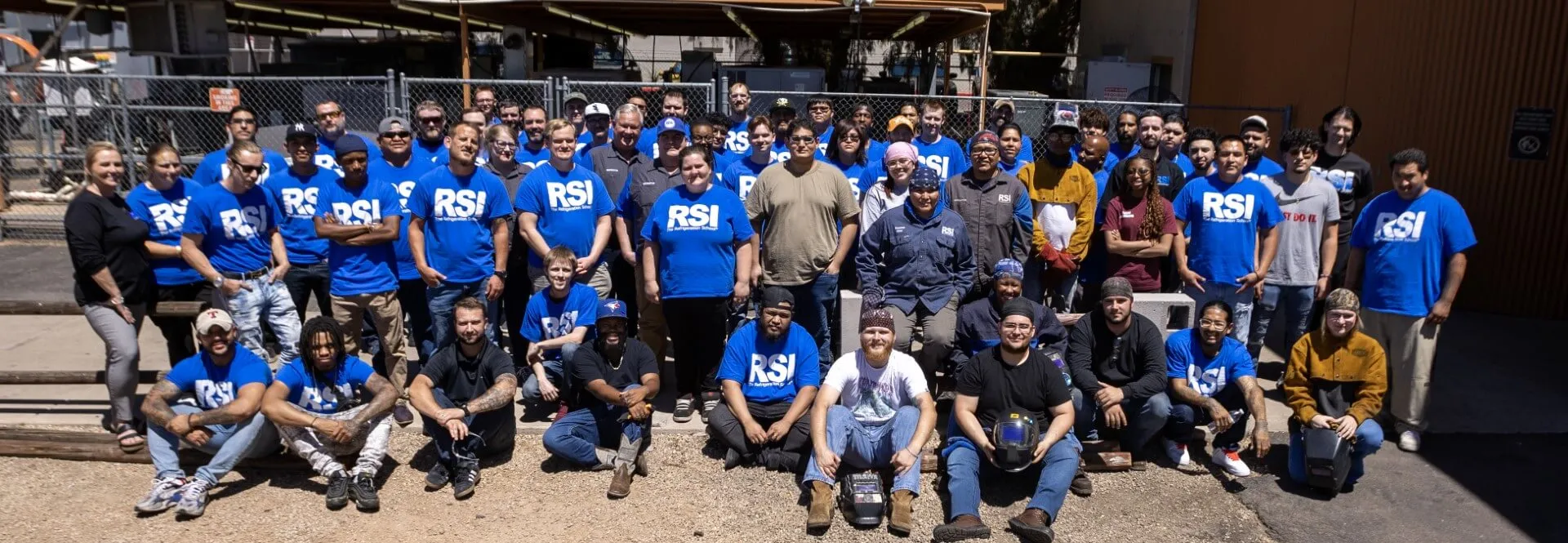RSI is a Great Training Option for Everyone
Learn more about how we can prepare you to advance your career.
Jobs in the skilled trades can be fun, action-packed and invigorating—but they can also be dangerous.
Workers in the skilled trades, such as HVAC, must adhere to Occupational Safety and Health Administration (OSHA) regulations to ensure workplace safety. HVAC technicians work in situations that are potentially hazardous:
- Handling refrigerants
- Operating on rooftops
- Dealing with wiring and electricity
Simply put, OSHA provides protection for HVAC pros when they’re working in risky conditions. But it’s more detailed than that.
So What Does OSHA Do?
OSHA is part of the United States Department of Labor. The agency was created by Congress with the Occupational Safety and Health Act of 1970, with the aim to ensure safe and healthy work conditions through setting and enforcing workplace standards.
The OSHA offers training, outreach, education and assistance to help employers and employees create secure working conditions. The OSHA’s administrator answers to the Secretary of Labor, who is appointed by the President of the United States.[1]
Get Started on the Path to a New Career
Fill out our form to learn how we can help you change your life.
How Does OSHA Work?
Any organization with at least one employee has to comply with OSHA regulations relevant to the particular industry and profession. Refrigeration training graduates ought to know if they are subjected to or covered under OSHA when they start working for a company.
Let’s take a closer look at how OSHA works.
Employees
All employees of any business are protected by OSHA regulations. If you are employed as an HVAC technician by a building contractor or a school, for instance, you are protected by OSHA standards and regulations.
Self-Employed Workers and Contractors
If a business hires you as a freelancer or contractor to service their HVAC system, it is not subject to OSHA regulations. OSHA also doesn’t cover self-employed business owners.
Employers
Employers must display an OSHA-compliant poster informing workers of their rights under OSHA in a prominent place. They also have to inform employees about how to identify and deal with hazardous materials in the workplace, exposure to pathogens and emergency procedures.
While every employer has to follow OSHA regulation if they employ at least one person, they don’t have to file injury or illness reports as long as ten or fewer employees have been working for them over the past year.
Federal and State Laws
While OSHA is a federal law, some states also have their own OSHA legislation. To find out if your state is subject to federal or state OSHA law, you can check OSHA-approved state plans. If your state doesn’t have a state plan, then it means that federal OSHA law applies.
Training
Any employer is mandated to develop an emergency action plan and provide an OSHA training program for all employees.
If the organization employs fewer than ten employees, the plan may be communicated orally. If the number of employees is larger than ten, however, the plan must be written out and kept in the workplace for employee review. Training must cover hazardous substances, pathogens, emergencies and OSHA inspections.[2]
OSHA and HVAC
OSHA has developed a set of rules for HVAC technicians—particularly for those who work on commercial and industrial construction sites.
Typically, a commercial or industrial site has a general contractor who manages the safety program. They are certified in OSHA rules and regulations and may hold safety seminars that each worker must attend.[3]
OSHA covers these HVAC job factors:
- Hazardous materials: Hazardous materials include gases and chemicals, such as refrigerants.
- Confined space entry: HVAC technicians often operate in confined spaces, like when they are installing ductwork.[4]
- Electrical Standards: HVAC professionals directly work with electricity, like when they are connecting HVAC systems to power sources.
- Respiratory protection: In some extreme cases, HVAC workers may need respiratory protection if toxic airborne substances are present while they’re performing maintenance or repair work.[5]
- Machinery: HVAC technicians who work on construction sites likely do so among heavy machinery, such as cranes or pavers.[6]
OSHA rules and regulations ensure that HVAC technicians work under safe conditions. This means that HVAC technicians aren’t exposed to toxic gases or chemicals, don’t get hurt by heavy machinery or burn themselves with faulty wiring. Thorough training in OSHA standards can literally save lives.
Every HVAC pro, no matter their niche, has to be current with ever-changing rules and regulations. Stay ahead of the cure and get caught up on the federal court ruling against the EPA HFC phase-out and what it means for the HVAC industry.
Additional Sources
[1] https://www.osha.gov/about.html
[2] https://www.thebalance.com/what-is-osha-what-do-employers-need-to-know-about-it-398385
[3] https://highperformancehvac.com/osha-safety-rules-hvac/
[4] https://www.osha.gov/SLTC/confinedspaces/
[5] https://www.osha.gov/Publications/OSHA3079/osha3079.html
[6] https://www.osha.gov/pls/imis/sic_manual.display?id=1009&tab=description
This blog has been labeled as archived as it may no longer contain the most up-to-date data. For a list of all current blog posts, please visit our blog homepage at https://www.rsi.edu/blog/
